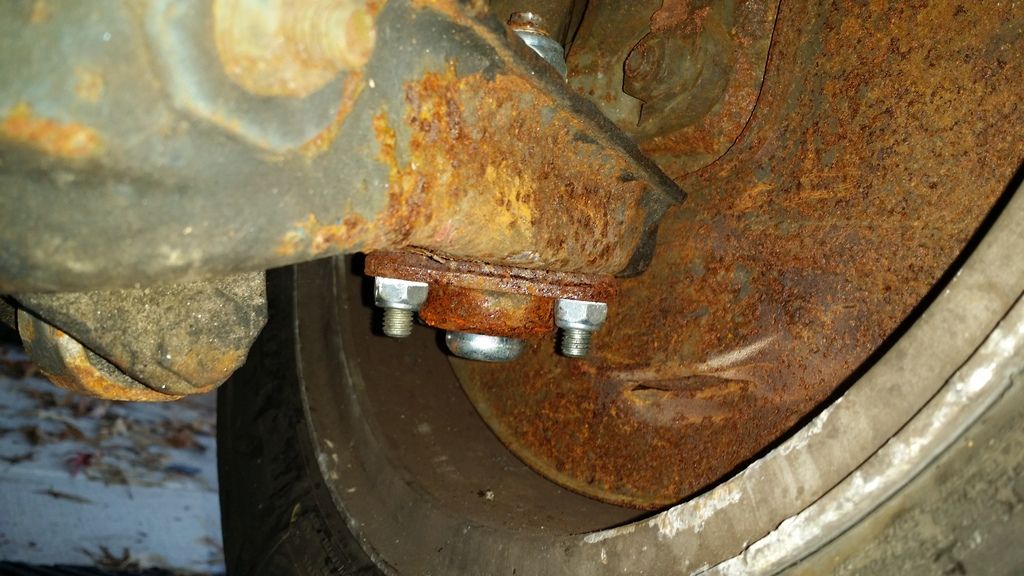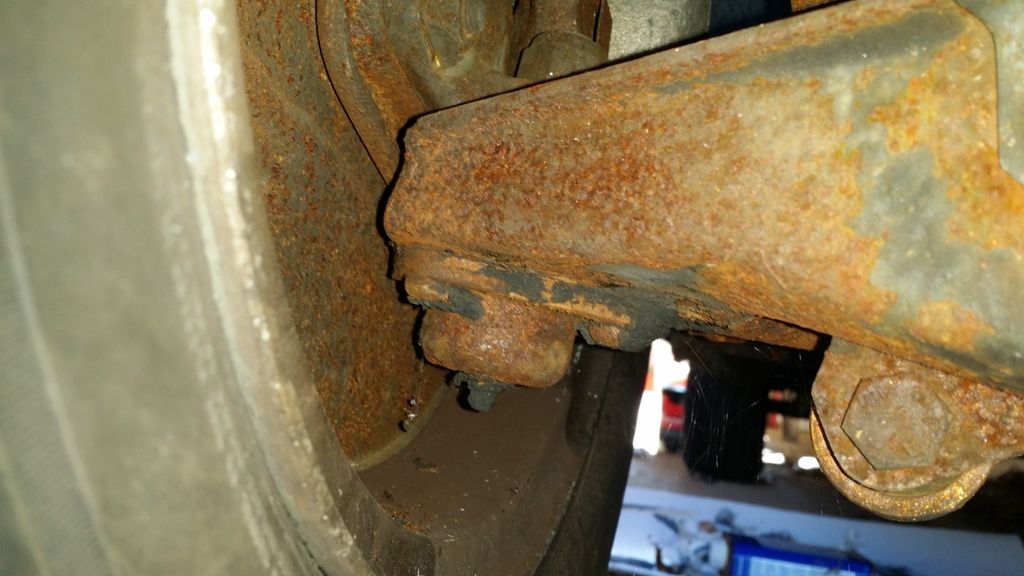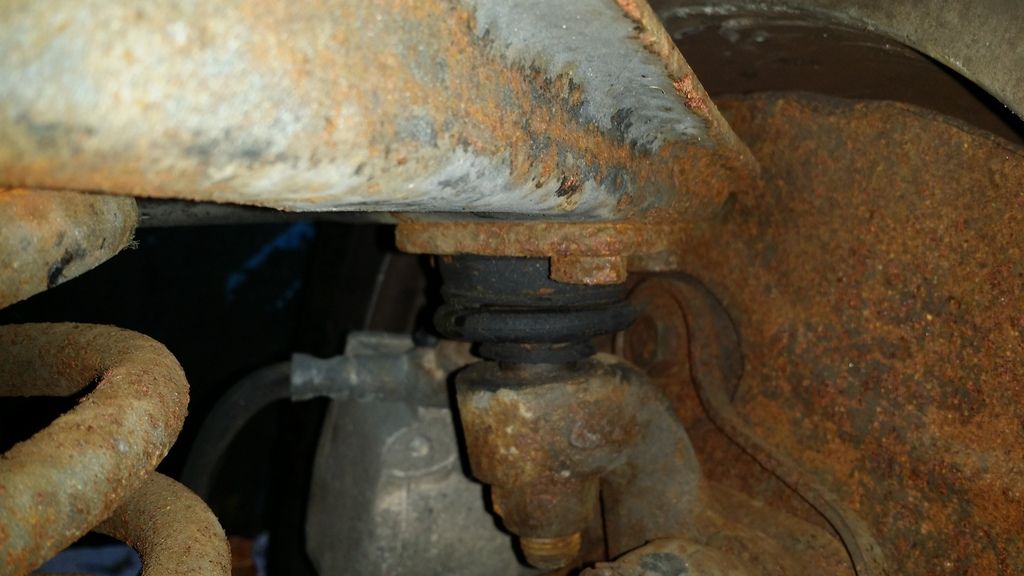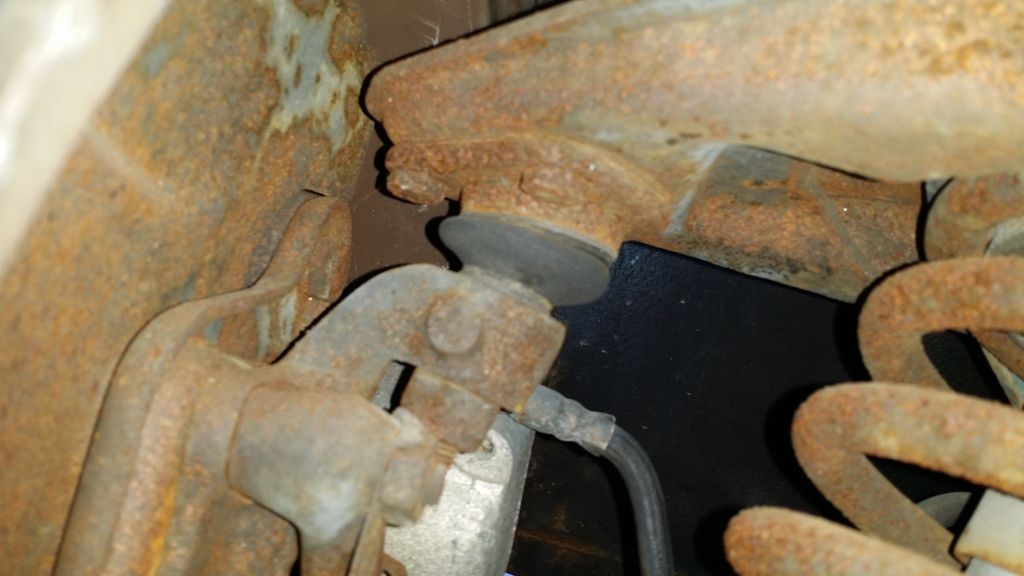I'm going to be attacking my camber issues this next week. I was planning on shimming (see existing thread started a week ago), but upon examination of where the A-arm meets with the crossmember I noticed that the bolts were already very close to flush. They're multi-thread bolts, so I could shim a little further, but I figured if the crossmember was OK and the member was already heavily shimmed, there must be something else causing a problem.
The previous owner had replaced the ball joint that connects the lower A-arm. He also replaced the brakes on the car-- but when I bought it the rear brakes wouldn't engage at all, so I'm thinking he did all the work with no load on the suspension members (since loading the rear is necessary to flush the brake fluid)... likely causing the camber misalignment I'm dealing with right now.
A short examination revealed that the bottom joints look OK (replaced and original):


While there's clearly a difference in the compression of the bushing on the top (replaced and original, respectively):


It honestly looks like the upper bolt is just severely under-torqued... I'm guessing if I un-torque the two bolts connecting the A-arms to the Hub, then re-torque them using a crowfoot wrench and a torque wrench, starting with the top then doing the bottom, that it'll probably do the trick. I should be able to resolve the camber issues and will be *removing* instead of adding shims. Does that sound right?
I have the car on ramps right now; if the adjustment should be done with the suspension fully loaded I could pretty easily put the rear on stands and add a couple hundred pounds to the front end and adjust it now.

